Abstract
Primary spinal cord neoplasms are rare, accounting for 1% of paediatric central nervous system tumours. The majority of which are low-grade gliomas (LGG). A teenage male presented with rapidly progressive lower limb paralysis. He subsequently underwent a near-total resection of an intramedullary thoracic tumour. Although the initial histopathology report suggested a LGG, closer review of the morphology and immunohistochemical staining revealed a diffusely infiltrating high-grade astrocytoma. Methylation profiling later confirmed a H3K27M-mutated spinal DMG. He underwent spinal radiation to the tumour bed soon after surgery but succumbed to his disease 8 days after completing radiation, and 3 months after presentation.
Conclusion: Spinal DMGs are rare, can lead to diagnostic challenges and have a poor prognosis.
Keywords: midline CNS tumours; diffuse midline glioma; high-grade gliomas; Spinal H3K27M-altered DMG; methylation profiling; IMRT.
Introduction
Primary spinal cord neoplasms in the paediatric population are rare, accounting for approximately 1% of paediatric central nervous system (CNS) tumours.1 Low-grade gliomas (LGG) constitute most of these tumours with WHO Grade 1 astrocytomas being the most prevalent subtype.1,2 Spinal diffuse midline gliomas (DMG) in children are diagnosed infrequently with only a few published case reports worldwide.1,2,3 Apart from their rarity, spinal DMGs can cause diagnostic dilemmas by having both radiological and histological features suggestive of a low-grade tumour, with deleterious outcomes.1,2,3
Diffuse midline gliomas comprise aggressive tumours of CNS midline structures that most commonly originate in the brainstem. They account for 75% of brain stem tumours in children between the ages of 3 and 10.4,5 Because of the infiltrative and diffuse nature of these tumours, prognosis remains poor, with a median survival of only 9 months to 12 months despite decades of clinical research.4,5,6,7 There is currently no curative therapy for DMG. Surgery is generally contraindicated because of the tumour location, while chemo-, immune- and molecularly targeted therapies have shown disappointing results. Radiotherapy, therefore, remains the mainstay of treatment, although with only transitory benefits.5,7 Radiation is usually delivered as focal intensity-modulated radiation therapy (IMRT) to the primary tumour (54–60 Gy, divided in 1.8–2 Gy fractions) for 5 days a week over 6 weeks. This results in a moderate decrease in tumour progression and tumour bulk, providing temporary symptom relief in about 70% – 80% of patients.5,6 All patients will, however, experience tumour regrowth, most within 6 months after completing radiation.6,7
At presentation, children with pontine DMGs typically demonstrate ataxia, long tract signs and/or cranial neuropathies. Those with DMGs outside of the pons present with varied symptoms based on the specific location of the tumour. For example, DMGs occurring in the thalamus may present with abnormal movements, behavioural changes and visual deficits; those in the midbrain with decreased alertness and visual disturbances; and DMGs of the spinal cord with sensory changes and weakness, urinary and bowel symptoms and/or pain. Symptoms may also suggest dissemination.8
Multiple factors contribute to the dismal prognosis of DMGs, including the relative inability to resect these tumours, their inherent resistance to treatment and the ineffectiveness of some drugs to permeate the blood–brain barrier. A lack of viable tissue for ex vivo models has, in the past, hindered progression of our understanding and treatment of these tumours.5,7 However, with an increasingly frequent use of stereotactic biopsies, now the standard of care in patients with DMG in most high-income countries, our knowledge about the molecular profile and mutational status of DMG has greatly expanded.2,5 One of the most significant contributions has been the identification of H3K27M, caused by trimethylation of lysine 27 on the histone H3 protein. This epigenetic modification is present in more than 80% of DMGs and yields an exceptionally poor prognosis. H3K27M mutations are, however, not pathognomic for DMGs and may be found in non-DMG CNS tumours (e.g. pilocytic astrocytomas and ependymomas) without signalling a dismal prognosis.7,9
To address these challenges, the fifth edition of the WHO Classification of Tumors of the CNS (WHO CNS5) published in 2021 incorporated histology, immunohistochemistry, as well as molecular testing into the diagnosis of these tumours.10 The CNS nomenclature was also updated to include H3K27M-altered DMG, reflecting a broader molecular understanding of DMGs and recognising other responsible pathogenic mechanisms and alterations.
In this edition, ‘DMG’ replaces the nomenclature, ‘diffuse intrinsic pontine glioma (DIPG)’, to emphasise that these lesions are not solely centred in the pons or brainstem. They may indeed originate in other midline structures such as the thalami, ganglio-capsular region, cerebellum, cerebellar peduncles, third ventricle, hypothalamus, pineal region as well as the spinal cord.7,10
We describe a young male who was diagnosed with a spinal H3K27M-altered DMG, and who progressed rapidly, ultimately succumbing to his disease.
Case presentation
A 13-year-old male presented to the Emergency Department with lower limb weakness emerging over the preceding few days. He was previously well and gave no history of a respiratory or gastrointestinal infection and no history of trauma. The patient reported that his right leg was weaker than his left leg and that he was struggling to walk. He demonstrated asymmetrical weakness (right > left) with depressed reflexes in his lower limbs but was able to walk with assistance.
A magnetic resonance imaging (MRI) spine at presentation (Figure 1) revealed an intradural intramedullary tumour (113 mm × 12.5 mm × 11 mm) from C7 to T6 vertebral level. The lesion was isointense on T1 and hyperintense on T2 and showed inhomogeneous peripheral enhancement with no evidence of haemorrhage and radiologically favoured a glioma or ependymoma.
 |
FIGURE 1: Magnetic resonance imaging of the spine with (a) T1 Sagittal, (b) T2 Sagittal and (c) T1 Sagittal fat-saturated gadolinium-enhanced images. The white arrows demonstrate the craniocaudal extent of the intramedullary lesion. |
|
He was transferred to the neurosurgical department the following day. On arrival, he demonstrated bilateral lower limb flaccid paralysis with bladder and bowel incontinence (sensory level T4/T5). Dexamethasone was started but with no appreciable clinical improvement.
In addition, the patient displayed autonomic instability with intermittent temperature spikes, bradycardias and hypertensive episodes. Empiric broad-spectrum antibiotics were started after a septic workup was conducted on admission (including serum infective markers, blood and urine cultures, a chest x-ray and respiratory viral panels). Blood results were unremarkable, and all cultures remained negative.
Two days later, he underwent a near-total resection of the lesion with intraoperative neuroelectrophysiological monitoring. Pre-operatively, his spinal cord level had progressed to T1 with no abdominal muscle control and some truncal ataxia. However, post-operatively he failed extubation, indicating that his spinal level was already much higher (C3–C5), possibly because of intraoperative tissue oedema.
An MRI spine was conducted 24-h post-operatively and confirmed a resected intramedullary tumour with no epidural haematoma(s) or cord compression. No residual tumour was visualised.
Ongoing paralysis of his diaphragm meant that he was unable to wean off mechanical ventilation which necessitated a tracheostomy. While in the intensive care unit (ICU), he demonstrated intermittent autonomic instability including temperature spikes, erratic blood pressure readings and an episode of possible seizure-like activity. An MRI of the brain was ordered at this stage and revealed no abnormalities with an electroencephalogram within normal limits.
Pathology
Macroscopically, the tumour comprised both fibrous and haemorrhagic fragments, while microscopically, a glial neoplasm with areas of low to moderate cellularity initially suggestive of a low-grade astrocytoma (Figure 2), was represented. Based on the morphology, the tumour was initially signed out as a LGG, but on immunohistochemistry, the diffusely positive P53 nuclear staining (aberrant, mutational type) and the high Ki67 proliferation index (30%) favoured a high-grade (HG) glial neoplasm despite the low mitotic count. On closer inspection, the morphology showed discernible mitotic activity in relatively small samples, microvascular proliferation as well as tumour necrosis (Figure 3).
 |
FIGURE 2: Haematoxylin and eosin stain at ×200 magnification. A low-grade area showing a glial neoplasm with low cellularity, no atypia and no mitotic activity. |
|
 |
FIGURE 3: Haematoxylin and eosin stain at ×400 magnification. A high-grade area showing a glial neoplasm with increased cellularity and mild atypia but lacking necrosis, microvascular proliferation and necrosis. |
|
Molecular testing was subsequently requested, and although limited in markers, did not reveal any known mutations (i.e. IDH-wildtype and BRAFV600E negative). To obtain a diagnosis and for prognostication, the tumour was sent to the Newcastle Genetics Laboratory in the United Kingdom and the German Cancer Research Center (dkfz) in Heidelberg, Germany. Here, methylation profiling was conducted using an Infinium MethylationEpic (EPIC) array. The EPIC array is a genome-wide methylation analysis tool that covers more than 850 000 methylation sites. These results confirmed a DMG, H3 K27 altered; subtype H3K27-mutant or Enhancer of Zest Homologs Inhibitory Protein (EZHIP) expressing. The O6-methylguanine-DNA methyltransferase (MGMT) promoter methylation status was unmethylated and the copy number variation revealed a complex genome with multiple chromosomal copy number changes and platelet-derived growth factor receptor alpha (PDGFRA) amplification (Figure 4).
 |
FIGURE 4: Copy number variation Manhattan plot. |
|
Clinical course
While awaiting results, the patient received minimal mechanical ventilation via his tracheostomy but could not be weaned off the ventilator. His parents refused percutaneous endoscopy gastrostomy (PEG) feeding, and so he retained a nasogastric tube. He received daily speech, occupational and physiotherapy with no clinical improvement. Palliative care was actively involved.
Spinal radiation was expedited, which entailed transferring him to a unit that had the capacity to deliver radiation and mechanical ventilation simultaneously. He received 1.8 Gy × 28 fractions (total dose 50.4 Gy) to the tumour bed using IMRT.
His methylation profiling results became available immediately prior to him completing radiation. His parents were counselled extensively, and a plan was put in place to counsel the patient regarding his diagnosis and prognosis.2
A day later, he experienced sudden loss of vision and worsening autonomic instability. An urgent MRI of the brain was requested and revealed new hyperintense fluid-attenuated inversion recovery (FLAIR) signalling of the leptomeninges around the pons, midbrain and lining of the 4th ventricle in keeping with leptomeningeal metastases (Figure 5).
 |
FIGURE 5: Magnetic resonance imaging of the brain. The white arrows demonstrate the abnormal hyperintense FLAIR signal of the leptomeninges around the pons, midbrain and lining of the 4th ventricle. |
|
His family members were counselled extensively regarding his rapid disease progression and dismal prognosis. He succumbed to his disease only 8 days after completing his spinal radiation and just 3 months after his initial presentation.
Discussion
H3K27M-altered DMG is an invasive midline HG glioma most commonly arising in the pons.3,4,5 In paediatric patients, spinal DMGs are exceedingly rare and can cause diagnostic challenges.2,3,11
Our patient presented with a short history of progressive lower limb weakness and was subsequently diagnosed with a primary spinal cord neoplasm. He underwent a near-total resection of the tumour, but a rapidly ascending spinal cord level prevented him from successful extubation. This, in turn, led to a prolonged ICU stay.
The tumour’s morphology was initially thought to be in keeping with that of a LGG, but later, on review, was considered to be a HG astrocytoma. Immunohistochemistry and molecular testing confirmed this. As per the recommendations of the 2021 WHO CNS5, this case highlights the importance of incorporating the histology, immunohistochemistry, as well as molecular testing into the diagnosis of these tumours.8,10
Despite IMRT to the tumour bed (50.4 Gy), our patient had a rapidly progressive clinical course. Leptomeningeal disease was confirmed on an MRI of the brain a few days prior to his demise and just 3 months from diagnosis.
Spinal DMGs are rare, may cause diagnostic dilemmas (requiring histology, immunohistochemistry, and molecular testing to make the correct diagnosis) and are universally characterised by limited treatment options and a dismal prognosis. These patients require new innovative therapies and enrolment into clinical trials.
Acknowledgements
Competing interests
The authors declare that they have no financial or personal relationships that may have inappropriately influenced them in writing this article.
Authors’ contributions
N.B. conceptualised, wrote, edited and contributed to visualisation of the article. K.G.B., D.D., M.R., L.D., F.T., D.P., R.G., D.-L.v.d.B., D.R., P.E.B., C.P., J.O., A.J. and S.B. contributed towards the reviewing and editing process. A.J. and S.B. acted as supervisors.
Ethical considerations
Ethical clearance to conduct this study was obtained from the University of Witwatersrand Human Research Ethics Committee (Medical), (reference no. M240672). Written informed consent was obtained from the patient’s parents.
Funding information
This research received no specific grant from any funding agency in the public, commercial or not-for-profit sectors.
Data availability
Data sharing is not applicable to this article as no new data were created or analysed in this study.
Disclaimer
The views and opinions expressed in this article are those of the authors and are the product of professional research. It does not necessarily reflect the official policy or position of any affiliated institution, funder, agency or that of the publisher. The authors are responsible for this article’s results, findings and content.
References
- Kumar A, Rashid S, Singh S, Li R, Dure LS. Spinal cord diffuse midline glioma in a 4-year-old boy. Child Neurol Open. 2019;6:2329048X19842451. https://doi.org/10.1177/2329048X19842451
- Vallero SG, Bertero L, Morana G, et al. Pediatric diffuse midline glioma H3K27 – altered: A complex clinical and biological landscape bening a neatly defined tumour type. Front Oncol. 2023;12:1082062. https://doi.org/10.3389/fonc.2022.1082062
- Cheng R, Li DP, Zhang JY, Liu TT, Yang L, Ge M. Spinal cord diffuse midline glioma with histone H3K27M mutation in a pediatric patient. Front Surg. 2021;8:616334. https://doi.org/10.3389/fsurg.2021.616334
- Cooney TM, Lubanszky E, Prasad R, Hawkins C, Mueller S. Diffuse midline glioma: Review of epigenetics. J Neurooncol. 2020;150(1):27–34. https://doi.org/10.1007/s11060-020-03553-1
- Noon A, Galban S. Therapeutic avenues for targeting treatment challenges of diffuse midline gliomas. Neoplasia. 2023;40:100899. https://doi.org/10.1016/j.neo.2023.100899
- Jovanovich N, Habib A, Head J, Hameed F, Agnihotri S, Zinn PO. Pediatric diffuse midline glioma: Understanding the mechanisms and assessing the next generation of personalized therapeutics. Neurooncol Adv. 2023;5(1):vdad040. https://doi.org/10.1093/noajnl/vdad040
- Di Ruscio V, Del Baldo G, Fabozzi F, et al. Pediatric diffuse midline gliomas: An unfinished puzzle. Diagnostics (Basel). 2022;12(9):2064. https://doi.org/10.3390/diagnostics12092064
- Coleman C, Chen K, Lu A, et al. Interdisciplinary care of children with diffuse midline glioma. Neoplasia. 2023;35:100851. https://doi.org/10.1016/j.neo.2022.100851
- Gonzalez Castro LN, Wesseling P. The cIMPACT-NOW updates and their significance to current neuro-oncology practice. Neurooncol Pract. 2020;8(1):4–10. https://doi.org/10.1093/nop/npaa055
- Louis DN, Perry A, Wesseling P, et al. The 2021 WHO classification of tumors of the central nervous system: A summary. Neuro Oncol. 2021;23(8):1231–1251. https://doi.org/10.1093/neuonc/noab106
- Isfaoun Z, Laasri K, Jidal M, et al. A rare presentation of a spinal diffuse midline glioma in a child: A case report. Pan Afr Med J. 2023;44:183. https://doi.org/10.11604/pamj.2023.44.183.39885
|